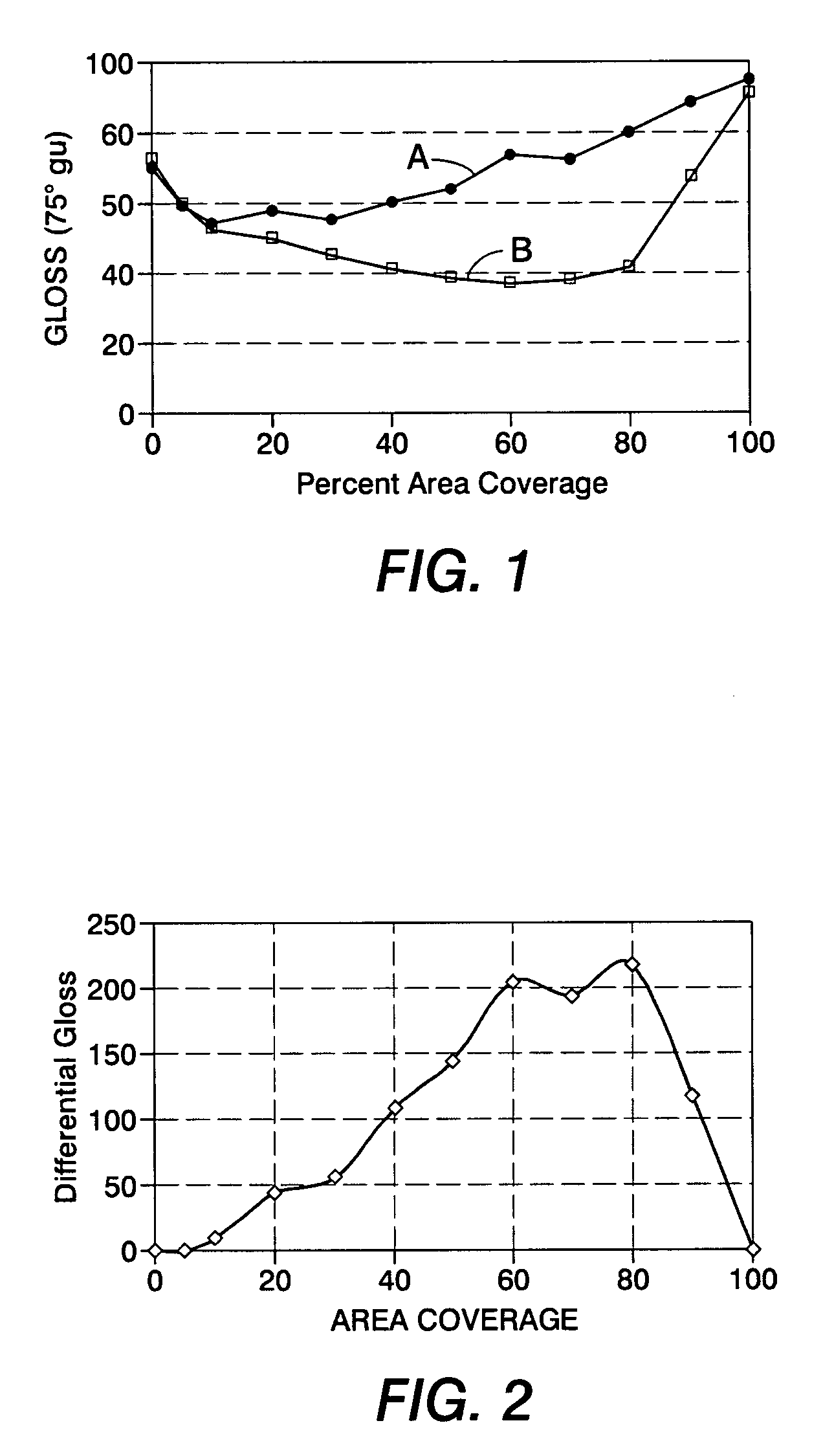Glossmark image simulation with application of background modified gloss effect image
a technology of background modification and image, applied in the field of simulation of gloss, can solve the problems of not being able to detect by scanner or copier, affecting the true color of background image, and existing methods not being able to show the true colors of background image,
- Summary
- Abstract
- Description
- Claims
- Application Information
AI Technical Summary
Benefits of technology
Problems solved by technology
Method used
Image
Examples
Embodiment Construction
[0033]In aspects of the exemplary embodiment, a system and method for generating a representation of a GlossMark™ (differential gloss) image are provided. The representation simulates a differential gloss image which would appear if a digital image were to be printed on a substrate using anisotropic halftone structures and viewed at an off-axis angle. The representation allows regions of the image designated as being of differential gloss, such as a watermark, to be visually distinguishable from the background image, for example, when displayed on a screen or printed by a device which lacks a facility for generating a GlossMark image.
[0034]In various aspects, the representation takes into account the gray level of the region of the background image in which the watermark is placed. Herein, gray level refers to increasing intensity for any channel, irrespective of whether it is a monochrome or a color channel. For example, the watermark in the simulated image may have an appearance c...
PUM
 Login to View More
Login to View More Abstract
Description
Claims
Application Information
 Login to View More
Login to View More - R&D
- Intellectual Property
- Life Sciences
- Materials
- Tech Scout
- Unparalleled Data Quality
- Higher Quality Content
- 60% Fewer Hallucinations
Browse by: Latest US Patents, China's latest patents, Technical Efficacy Thesaurus, Application Domain, Technology Topic, Popular Technical Reports.
© 2025 PatSnap. All rights reserved.Legal|Privacy policy|Modern Slavery Act Transparency Statement|Sitemap|About US| Contact US: help@patsnap.com



